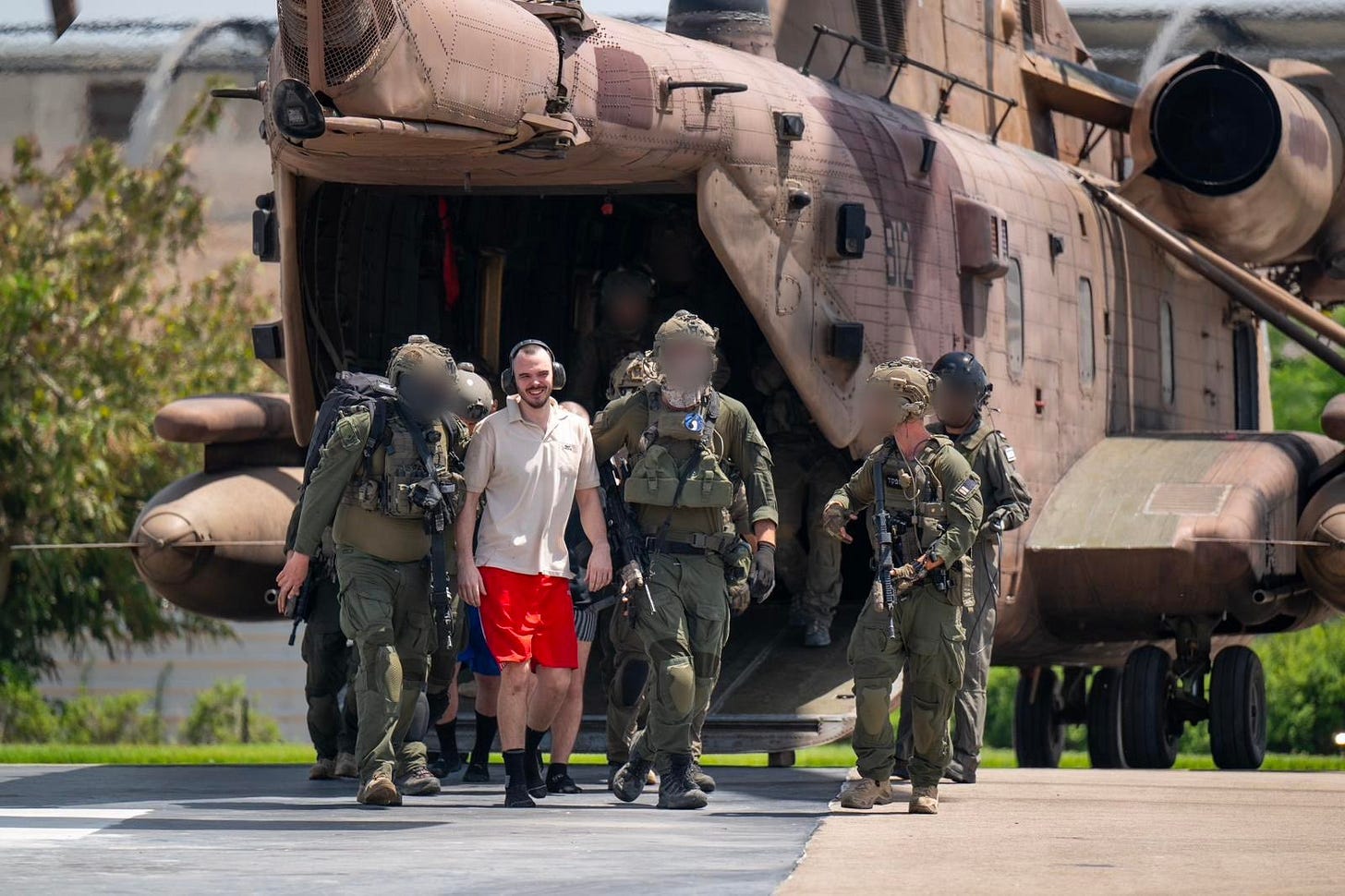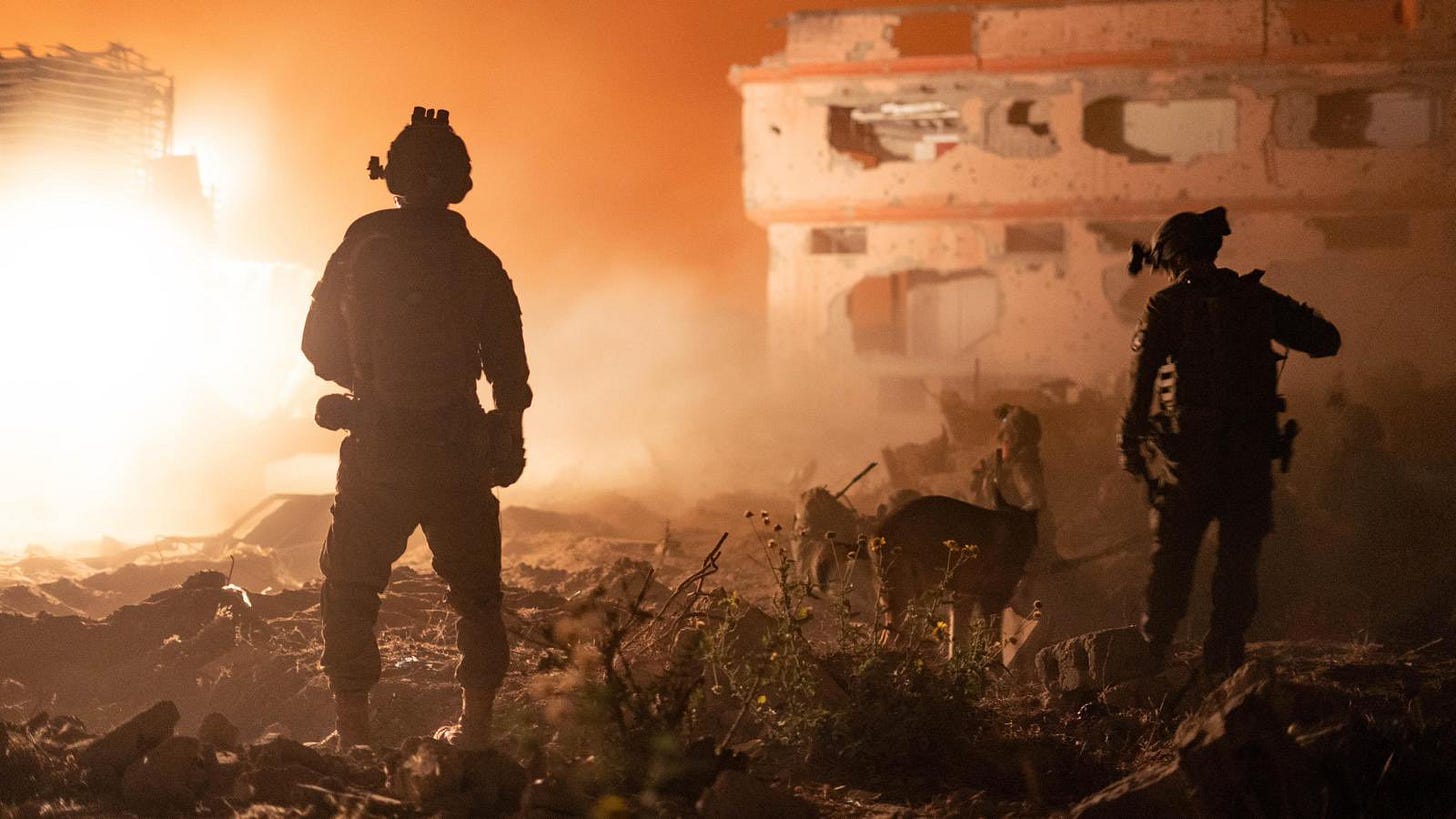10 Unbelievable Stats About the Israel–Hamas War
Behind every number lies a story of resilience, complexity, and moral clarity in one of the most consequential wars of the 21st century.
Please consider supporting our mission to help everyone better understand and become smarter about the Jewish world. A gift of any amount helps keep our platform free of advertising and accessible to all.
From staggering numbers of warnings and aid shipments to historic hostage releases and unprecedented regional coordination, the Israel–Hamas war has produced figures that defy imagination.
Here are 10 stats that reveal just how complex, vast, and consequential this conflict truly is.
1) The IDF’s Civilian-to-Combatant Death Ratio
Israel has achieved an unbelievable civilian-to-combatant casualty ratio, which is believed to be 1.5-to-one — and that is if you accept Hamas’ numbers (which have been proven mathematically impossible). For reference, the international average is a nine-to-one civilian-to-combatant casualty ratio according to the UN.
The 1.5-to-1 ratio becomes even more striking when measured against the systematic and daily use of civilians as human shields by Hamas and other Gaza-based terrorist organizations.
2) More Than 20 Million Evacuation Notices
One of Israel’s more unprecedented information campaigns: tens of millions of text messages, phone calls, leaflets, and broadcasts were transmitted to civilians in Gaza, telling them to evacuate ahead of combat operations. The purpose was to reduce civilian casualties by encouraging relocation from high-threat zones. The IDF also set up a variety of humanitarian corridors for civilians to use as escape routes.
Beyond evacuation notices and humanitarian corridors, Israel took a role in repairing or restoring key infrastructure in Gaza. One high-profile example: In coordination with the Israel Electric Corporation, a power transmission line was reactivated to supply electricity to a desalination plant that provides potable water for about 900,000 Gaza residents.
3) 1.9+ Million Tons of Aid Delivered
Since the war’s start, aid agencies, United Nations bodies, and Israeli logistical efforts have funneled an enormous volume of humanitarian assistance into Gaza. The figure of 1.9 million tons (delivered by nearly 100,000 large trucks) reflects the intensity and scale of the humanitarian response under extremely constrained and dangerous conditions.
This aid includes food, water, medical supplies, fuel, shelter materials, and more. The challenge has been not just volume, but distribution — getting supplies to isolated, bombarded or besieged zones in Gaza, often amid damaged roads, destroyed bridges, shifting front lines, and security barriers.
4) A Record Year of Immigration
In 2024, Israel experienced one of its most remarkable years of immigration (aliyah) in recent memory, welcoming more than 31,000 new immigrants from over 100 countries — even as the nation was at war. The largest influx came from Russia, with roughly 20,000 new arrivals, followed by North America (about 3,340 from the U.S. and Canada combined), France (1,820), and Ukraine (980). Smaller yet significant waves arrived from Belarus, the U.K., and Argentina, with additional newcomers from Georgia, South Africa, Brazil, Uzbekistan, and beyond.
Following the October 7th attacks, interest in immigrating to Israel surged across the Western world. Immigration cases skyrocketed: up 352 percent from France, 87 percent from Canada, 62 percent from the U.K., and 60 percent from the U.S. The trend reflects not only deepening concerns about antisemitism abroad, but also a renewed sense of connection and solidarity with Israel during a time of crisis.
The coastal city of Netanya emerged as the top destination, absorbing more than 4,700 new immigrants, followed by Tel Aviv, Haifa, and Jerusalem — each now home to growing, diverse communities of new Israelis.
5) 155 living hostages were released.
One of the most emotionally charged aspects of the conflict has been the hostage crisis. Over the course of various negotiations, prisoner exchanges, covert operations, and ceasefire deals, a total of 155 living hostages were released.
This number illustrates both the scale of the hostage-taking (251 were seized on October 7, 2023) and the complexity of resolving such cases. Each release typically involved delicate diplomacy, intelligence operations, and high political stakes on both sides.

6) At least 5,500 Gazans invaded Israel on October 7, 2023.
On that day, Palestinian terrorists (many embedded with or among Gaza civilians) carried out a massive assault, crossing into southern Israel via land, sea, and air.
The scale of the incursion — simultaneous raids, attacks on border communities, kidnappings, mass casualties — shocked Israel and reshaped its security, strategic, and public outlook. The invasion marks one of the most significant cross-border asymmetric assaults in recent memory.
7) A Seven-Front War
One surprising dimension is how multi-theater the confrontation became. Although the core of the conflict was Gaza, Israel has had to contend (to varying degrees) with tensions, attacks, or threats in:
Gaza (primary front)
West Bank (terrorist attacks and anti-terrorism operations)
Lebanon (Hezbollah engagements along the border)
Yemen (Houthi drone and missile launches)
Iran (strategic confrontation, missiles and drones)
Syria (drone launches, cross-border incidents)
Iraq (militia attacks, drone launches)
This multi-front stretch shows how the Israel–Hamas conflict cannot be viewed in isolation; it sits at the heart of a volatile regional chessboard, where many actors are involved with overlapping objectives, rivalries, and alliances.
8) UN Terrorists
More than 450 individuals affiliated with terrorist organizations (mainly Hamas) have been employed by UNRWA (the UN agency for Palestinian refugees in Gaza). In investigations, the UN Office of Internal Oversight Services reportedly looked into 19 UNRWA staff members accused of “raping, killing, slaughtering Israelis” during the October 7th attacks; 9 were singled out in the final investigation.
These allegations have major implications: If true, they suggest infiltration or exploitation of humanitarian institutions for terrorism.
9) Another Day in the Neighborhood
Since its founding in 1948, Israel has engaged in many wars, conflicts, and military operations. Counting 13 full-scale wars or major conflicts (or comparable campaigns), the State of Israel averages more than one such conflict per decade. Israel presents each as defensive in nature — responses to existential or territorial threats, infiltration, rocket barrages, or direct attacks.
If you tally from 1948 onward, conflicts include the 1948 War of Independence, 1956 Suez Crisis, 1967 Six-Day War, 1973 Yom Kippur War, 1982 Lebanon War, 2006 Lebanon War, the various Gaza operations (Cast Lead, Pillar of Defense, Protective Edge, Guardian of the Walls, Swords of Iron), intifadas, and other cross-border or frontier disputes.
10) Heroes of Israel
There was a remarkable report in Israel’s largest newspaper, Yediot Ahronot, which said that, just days after the October 7th attacks, an American three-star Marine Lieutenant General showed up in Israel to advise the Jewish state on its strategy in Gaza. A ground operation, the Americans said, was too costly and not worth the squeeze. They predicted a dire 20 Israeli soldier deaths per day, which would have amounted to 14,700 dead Israeli soldiers.
In reality, the actual number is approximately 1.2 per day. Some 914 Israeli soldiers have fallen since the beginning of the war. May their memories be a blessing.



We need a book very soon that covers the entire war and explains in detail every IDF policy and major action - why they did it and what were the results.
We’re in an information war combating an endless stream of lies and slanders against Israel, and the MSM has given up on being fair minded journalists who actually investigate anymore.
Oh what I’d give for the world to understand these.